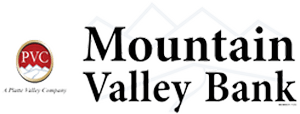In the midst of a global coronavirus pandemic, many small businesses are under extreme pressure, forced to adopt new daily practices to keep customers and employees safe, or shuttered completely to control the spread of the virus.
The Coronavirus Aid, Relief, and Economic Security Act details unemployment benefits, individual stimulus check amounts, retirement account withdrawals, and loans and relief for small-business owners and the self-employed, including “gig workers.”
Small businesses and self-employed workers have four primary relief valves in the law.
1. Deferment of existing SBA loans
If you have existing business loans guaranteed by the SBA, they will go into deferment for a six-month period. This means you won’t be required to make payments, and instead, the SBA will pay your lender beginning with the next payment due.
If your current loan is already on deferment, it will enter this six-month grace period after your current deferment has ended.
2. Access to loans and immediate emergency funds
To keep businesses afloat and employees paid, small-business owners and the self-employed will be eligible for two loan types: Paycheck Protection Program Loans and Economic Injury Disaster Loans. Portions of the former may be forgivable, and the latter comes with access to a potential $10,000 grant. (More on what’s forgivable below.)
Paycheck Protection Program Loans will not exceed 4% interest. The maximum loan amount for most people is the lesser of your average monthly payroll costs in the previous year times 2.5 or $10 million. If you’re self-employed, the maximum loan amount is equal to your net earnings up to $100,000 in one year times 2.5 or $250,000, total.
These loans are to be used for payroll and compensation costs, healthcare benefits, mortgage interest, rent, utilities, and interest incurred on other existing business debts. Borrowers will have six months to one year before they are required to begin making payments. SBA-approved lenders will make these loans available beginning on April 3 and will not require typical fees, personal guarantees or collateral.
Economic Injury Disaster Loans, on the other hand, are offered directly from the SBA, and borrowers can apply now on its website. To provide relief as quickly as possible, grants of up to $10,000 will be available as an advance within three days of applying for an Economic Injury Disaster Loan.
The EIDL can be transferred into a Paycheck Protection Program Loan to take advantage of loan forgiveness. In that case, the advance amount is deducted from the amount of debt eligible for forgiveness.
3. Debt forgiveness for payroll, operational costs
If you take out a loan under the Paycheck Protection Program, a portion will be forgivable. You will not be required to pay back the loan funds used for payroll, mortgage interest payments, rent and utilities in the eight-week period following origination. Also, this forgiveness amount will not be taxable as gross income, as debt forgiveness sometimes is.
A primary goal of this law is to keep businesses afloat (even if not open) and workers paid, so the forgivable amount may be reduced if you have to reduce either the number of employees you have or the compensation of any employee, and those changes aren’t undone by June 30, 2020.
4. Additional tax credits and delayed tax payments
If your business is closed to comply with government orders or suffers a decrease in gross receipts of 50% or more compared to the same period last year, you’ll be eligible for a 50% payroll tax credit on wages up to $10,000 per employee. This credit is not available if you’re using a Paycheck Protection Program loan.
Further, you can delay payroll tax payments normally due between now and Jan. 1, 2021. Half of the delayed taxes would be due on Dec. 31, 2021, and the remaining balance by Dec. 31, 2022.
The article Coronavirus Relief for Small Businesses and the Self-Employed originally appeared on NerdWallet.


Recent Comments